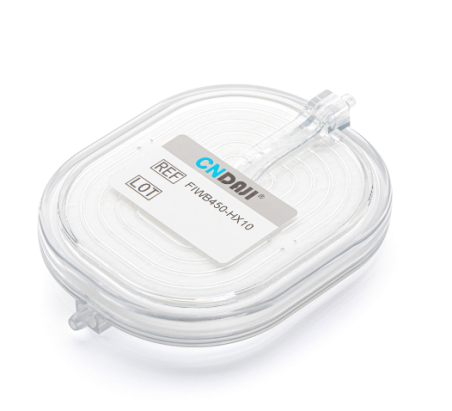In modern transfusion medicine, the safety and quality of blood components are critical to ensuring positive patient outcomes. One of the most essential steps in achieving this is white blood cell (WBC) removal, also known as leukoreduction.
Leukocytes present in blood products can cause a range of adverse effects in recipients, from mild febrile reactions to serious immunological complications. As filtration technology advances and international standards evolve, best practices for leukoreduction are becoming increasingly standardized and evidence-based.
This article outlines the latest global best practices for effective white blood cell removal during blood donation, supported by clinical research and regulatory guidelines. These recommendations aim to help blood centers, hospitals, and blood collection agencies enhance safety, compliance, and operational efficiency

White blood cells in transfused blood components pose several well-documented risks:
Febrile Non-Hemolytic Transfusion Reactions (FNHTRs) — The most common type of non-infectious transfusion reaction
HLA Alloimmunization — Can lead to platelet refractoriness and difficulties in future transfusions or transplantsTransmission of Leukocyte-Associated Viruses — Such as Cytomegalovirus (CMV) and Human T-cell Lymphotropic Virus (HTLV)
Immunomodulation — Particularly harmful to immunocompromised patients, including those undergoing chemotherapy or organ transplantation
Numerous peer-reviewed studies published in The Lancet, Transfusion, and Blood Reviews confirm that universal pre-storage leukoreduction significantly reduces these risks, making it an essential component of high-quality blood processing.
Universal pre-storage leukoreduction — filtering all blood components before storage — has become the gold standard in transfusion safety. This approach ensures:
· Uniform removal of WBCs across all units
· Reduced risk of bacterial growth and cytokine accumulation during storage
· Compliance with leading international standards such as AABB, EDQM, and WHO
Recommended for: Red blood cells (RBCs), platelets, and selected plasma components.
Filter selection is a cornerstone of effective leukoreduction. Key performance criteria include:
Filter Attribute | Recommended Standard |
Residual Leukocyte Count | <1 × 10⁶ per unit |
Blood Component Compatibility | RBCs, platelets, plasma |
Red Cell Loss | Minimal (<5%) |
Certifications | ISO 13485, CE, FDA |
Clinical Validation | Peer-reviewed efficacy data |
Collaborating with certified filter manufacturers ensures long-term reliability, traceability, and compliance.
Timely and consistent filtration is vital for preserving blood product integrity:
· Red Cells: Must be filtered within 48 hours post-collection
· Platelets: Ideal filtration window: 6–24 hours post-collection
· Filtration Methods: Gravity-fed systems or automated platforms based on workflow capacity
· Environmental Conditions: Maintain room temperature (20–24°C) during filtration
Proper staff training is essential to ensure correct technique, minimize red cell loss, and prevent contamination.
To maintain consistency and meet regulatory expectations, blood centers must implement robust QC measures:
· Routine Testing: Confirm residual leukocyte levels in filtered units
· Batch Validation: Test filters before large-scale deployment
· Documentation: Maintain records of lot numbers, test results, and process deviations
· Supplier Audits: Regularly evaluate filter suppliers for compliance and quality consistency
These practices support traceability and facilitate corrective actions in case of non-conformance.
Maintaining sterility during leukoreduction is crucial to prevent microbial contamination:
· Conduct filtration in clean, designated areas
· Use sterile, single-use filtration sets
· Disinfect workstations regularly and calibrate equipment
· Enforce strict hygiene protocols among staff (e.g., gloves, masks)
Sterile processing minimizes the risk of septic transfusion reactions and enhances overall product safety.
Certain patient populations require additional safeguards due to their heightened vulnerability:
· Oncology Patients
· Organ Transplant Recipients
· Neonates and Pediatric Patients
· Immunocompromised Individuals
For these groups, blood products should undergo validated leukoreduction and may benefit from pathogen reduction technologies (PRT) or CMV-seronegative donor matching where indicated.
Human factors play a significant role in successful leukoreduction. Best practices include:
· Regular Workshops: On filtration techniques, troubleshooting, and new equipment
· Competency Assessments: For personnel involved in blood processing
· Training Updates: Reflecting changes in guidelines or filter models
· Simulation Drills: To handle emergencies like filter failure or contamination incidents
Well-trained staff contribute directly to the consistency and safety of the leukoreduction process.
Several leading health organizations have issued clear guidance on leukoreduction:
Organization | Key Recommendations |
AABB (USA) | Strongly recommends universal leukoreduction; mandates QC testing |
EDQM (EU) | Requires leukoreduction for most components; defines residual leukocyte limits |
WHO | Supports leukoreduction for improved safety, especially in CMV-endemic regions; encourages cost-effective solutions for developing countries |
Compliance with these guidelines not only ensures patient safety but also facilitates international recognition and trade of blood products.
Implementing best practices in leukoreduction delivers multiple benefits:
Reduced Transfusion Reactions
Improved Patient Outcomes, Especially in High-Risk Groups
Extended Shelf Life and Better Quality of Blood Components Increased Acceptance of Products in International Markets
Compliance with Hospital Procurement and Regulatory Requirements
In today’s highly regulated healthcare landscape, high-standard leukoreduction is both a clinical imperative and a strategic advantage for blood centers.
Effective white blood cell removal is no longer optional — it is a globally recognized standard for safe, high-quality blood donation and transfusion. By adopting best practices such as universal pre-storage leukoreduction, selecting certified filters, maintaining strict quality control, and investing in staff development, blood centers can ensure compliance, enhance patient care, and build trust in their operations.
As a trusted manufacturer of advanced leukoreduction filters, DaJiMed offers reliable, high-performance filtration solutions tailored to the evolving needs of blood centers worldwide.
Partner with DaJiMed — your expert in innovative blood filtration technology.
Ready to Enhance Your Leukoreduction Capabilities?
Contact DaJiMed for:
· Expert consultation on filter selection and validation
· Technical documentation and compliance support
· OEM/ODM services for customized filtration solutions
· Global logistics and packaging options
Let DaJiMed helps you deliver safer, higher-quality blood products — every time.
Copyright © Guangzhou DaJi Medical Science and Technology Co., Ltd. All Rights Reserved Sitemap | Powered by 